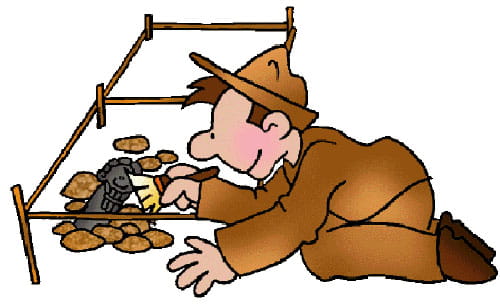Current Events
Everyday, different events, phenomenons, and discoveries occur. These current events are portrayed in the newspapers, on the news channels, on websites, and even on handheld devices. Myself and another teacher candidate had to create an activity that we would implement in an elementary classroom. We chose to use the website, NewsELA (which I highly recommend).
NewsELA is an online website that contains articles of various topics. Each article has different reading difficulty levels, so students on all academic grade levels can read the same article. There are also optional writing pieces and quizzes attached with each article. Teachers can choose articles for students as assignments and students just have to login and begin.
What's It To You?
Myself and the other teacher candidate decided to use this article. This article was about how Arizona is the only state to pass a law that high school students must pass a civic competence exam (the same exam that is required for US citizenship) in order to graduate high school and that other states might be passing the same law. We chose this topic because students and teachers can relate and connect to this article because they are both immediately affected. Here is our presentation.
The class divided into two groups to discuss how this article impacts them as a student and as a teacher. They also discussed how this law would impact their families, as well as the world they live in.
Materials
1) Internet access
2) Youtube
My Current Events Experience
According to Wise Owl Kids, "Young Americans know less and care less today about what's going on than young Americans of previous generations. It is believed that very few youth are aware of what is going on at the local, national, or international level" (n.d). Current events assist students to becoming more aware of world events and the impact on them as citizens. When students read newspapers and articles, it boosts reading competence through language, vocabulary, and comprehension skills (Wise Owl Kids, n.d.). I believe it is really important that teachers recognize the importance of teaching current events in the classroom. Wise Owl Kids suggests numerous activities to implement current events in the classroom such as: 1) News-mapping, 2) The five w's and 3) What's it to you?. As mentioned earlier, we chose the activity, What's it to you?.
I thought this current events activity went really well. I thought the design and implementation of this activity worked well with the class. The PowerPoint presentation was able to activate the class' prior knowledge, as well as provide background knowledge about current events. A video provided an introduction to the topic about Arizona passing a state law for students to take and pass a citizens test to graduate high school. The NewsELA article provided that content that was being taught. The class was highly receptive. All students were engaged and participated in the discussion. A debate almost occurred because some students agreed with the passing law, while others did not.
Overall, I strongly believe this activity is a great way for students to become aware of the events that are occurring in the world they live in. First, this activity aligns with the New York State Common Core Standards for both ELA and Social Studies. Students discuss a topic about citizenship and civic competence, as well write their responses. Second, this activity incorporates the five elements of social studies: 1) Challenging, 2) Value-based, 3) Active, 4) Integrative, and 5) Meaningful. Social studies teaching and learning are powerful when they include these five elements (National Council for Social Studies, n.d.). This activity was challenging because it allowed students to use their higher order and critical thinking skills. If a student was on a lower reading level, he/she could change the difficulty level on the article to a lower level and students who were above their reading grade level could raise the difficulty level of the article as well. This article was value-based because it taught students about a topic that is valuable to them; students might have to take another test and pass this test in order to graduate. This article was active because it required student participation. After students read the article individually, they had to participate in a discussion. When students are active in the classroom, they begin to develop their own opinions and become active members of society. When students become active members of society, they begin to become competent as a citizen. This article is integrative because it can be taught in various subjects, and not just in social studies. This article can be taught in ELA, science, or math. This article was also meaningful because students and teachers were able to make a connection to it (National Council for Social Studies, n.d.). Teachers have to prepare students for the tests and are evaluated off of test scores. By having another test to worry about, teachers will have to take more time out of their day to prepare students for another test. Students would have to worry about passing another test, especially students who are not good test-takers.
Personally, I greatly enjoyed using NewsELA and thought it was very easy to use. The articles were very helpful to read from the site, especially since they allowed different reading levels. I also like how students could take a brief quiz to see if they comprehended the article they just read. I believe NewsELA is a useful and effective tool to use in my future social studies classroom because it has articles for all subjects and topics, which means there is an article that every student can make a connection too. I also believe this site is effective because it tracks student progress. After a student takes a quiz, his/her score is placed on a graph. As more quizzes are taken, the graph obtains more data points. This allows the student to visually see if he/she is understanding the articles and maybe needs to read the articles on a more challenging level or if the student needs help in comprehending the article and needs to lower the reading level. The only improvement I have for this project next semester would be to implement this activity during fieldwork. I think it would be great to see how receptive the students are to this activity, as well as to teach them about current events.
References
National Council for the Social Studies. (n.d.) Principles of teaching and learning. Expectations of Excellence: Curriculum Standards for Social Studies. Retrieved March 20, 2015 from
Wise Owl Kids. (n.d.) Current events. Retrieved April 2, 2015 from http://www.ncwiseowl.org/ss/Current/activities/default.htm


